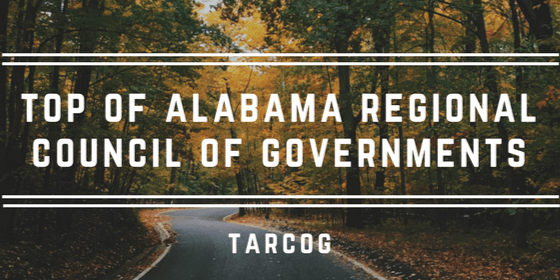HUNTSVILLE — Residents in three north Alabama cities concerned about potential environmental hazards in three corridors have four years to pitch for funding to ease worries.
Top of Alabama Regional Council of Governments (TARCOG) received a $1.5 million Brownfield Assessment Grant from the Environmental Protection Agency to study the needs of sites in Athens, Fort Payne and Gurley. TARCOG will determine what it will take to transform any potential hazards in those locations.
Economic Development and Planning Director Lee Terry said the funding will be used to inventory, conduct environmental assessments, develop 15 cleanup plans, three revitalization plans, and support community engagement activities in each of the each of the communities for input on redevelopment potential over the next four years.
Executive Director Michelle Jordan said she is proud of the TARCOG team that landed the grant and excited for what the funding will mean for Athens and Limestone County, as well as Gurley and Fort Payne.
“This will be the starting point for positive changes in each of these areas,” Jordan said.
- Athens
The Athens portion will focus on the proposed Easy Street Art Trail in Downtown Athens.
The proposed trail location is along the railroad tracks from the vacant freight depot and Alabama Veterans Museum, south to Hendricks-Patton, and west to Old Black Bear. One of TARCOG’s priority sites on the trail is the vacant Limestone County-owned L&N Freight Depot.
“Athens is extremely excited about Easy Street Art Trail and how it can honor our history, promote the arts, enhance an unattractive area, and improve walkability downtown,” Mayor Ronnie Marks said. “This is history we need to preserve, or we will lose it.”
While the grant will address different phases of the project, long range plans the city has for the site includes creating a trail that will pay homage to the history of Easy Street, which ran along the railroad tracks between Hobbs and Market streets. According to history provided in 2002 by James Croley, which was published in a booklet, Easy Street was the black-owned business area and included Bell Café, Simmons and Grigsby Barbershop, Coble Barbershop, Higgins Café and Dr. B.F. Hill’s veterinary office. - Fort Payne
Mayor Brian Baine said the site the city is interested in looking at is from Second Street North to Fourth Street North. It’s a three-acre lot that houses six vacant industrial and warehouse buildings.
“It’s in the heart of our downtown and being able to revitalize and repurpose sites in this area will be huge for our downtown and businesses,” Baine said. “We want to incorporate several different things in there from shops, eating establishments, places to hang out and a stage area that can be used for our ‘Third Saturday’ concerts and to serve as an area where we can pull our community together.”
He said being able to identify what’s there and get them cleaned up will be beneficial to the city so that it can then move forward with revitalization plans. - Gurley
John Kvach, executive director of the Singing River Trail, said he sees this as another way of investing in communities and in this case, taking a space that is not helping the community in any way and helping prepare it for an educational or recreational space.
He’s talking about a 0.33-acre vacant lot that houses a 1,290-square-foot former convenience store and gas station with three above-ground storage tanks in Gurley, and the Athens corridor.
“To repurpose or reuse what they’ve had and change it to something that can be used in relation to the Singing River Trail for Athens and Gurley is exciting,” he said. “Both are trail towns working toward connecting their towns and making them more accessible.”
The trail is a recreational greenway project covering more than 200 miles across the top of Alabama that will showcase towns and cities along the route.
“This is a route we’re taking in both towns and for us it’s really symbolizes how Athens and Gurley are open for business and developing around their natural resources which is exciting for us,” Kvach said.
EPA’s Brownfields Program empowers states, communities, and other stakeholders to work together to prevent, assess, safely clean up, and sustainably reuse brownfield sites.
A brownfield site is real property, the expansion, redevelopment, or reuse of which may be complicated by the presence or potential presence of a hazardous substance, pollutant, or contaminant.
The Small Business Liability Relief and Brownfields Revitalization Act of 2002, as amended by the Brownfields Utilization, Investment and Local Development Act of 2018, was passed to help states and communities around the country clean up and revitalize brownfield sites.
Under this law, EPA provides financial assistance to eligible applicants through five competitive grant programs: Multipurpose Grants, Assessment Grants, Revolving Loan Fund Grants, Cleanup Grants, and Job Training Grants.
Don’t miss out! Subscribe to our email newsletter to have all our smart stories delivered to your inbox.



